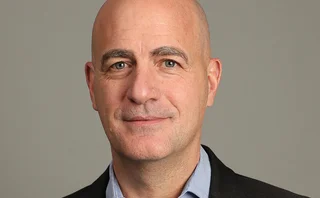
Innovation of the year, Americas - BNP Paribas
This award category was open to every company active in the structured products markets across the Americas. As such, it was perhaps the most difficult award to judge - after all how does one differentiate between the impact of a new technology over the impressive sales figures of a particular product or the sterling work of a law firm, for example. Nevertheless, we at Structured Products feel we have made the right decision to honour BNP Paribas, one of the structured products heavyweights globally, for its innovative $1.7 billion equity transaction with California-based computing giant Hewlett-Packard (HP).
In a nutshell, HP prepaid $1.7 billion in exchange for the right to receive a variable number of shares of its common stock over the one-year term of the transaction. The prepaid variable share repurchase programme (PVSR) allows HP to hedge the repurchase price of its shares by establishing a guaranteed collar range, or rather a maximum and minimum price within which to purchase shares.
The innovative, customised programme, structured solely by BNP (which also acted as counterparty), enabled HP to limit the price uncertainty or volatility risk inherent in its share repurchase programme and reduce any potential dilution costs associated with its employee benefit plans. Importantly, the deal is the largest ever US structured buyback, according to Todd Steinberg, head of equities and derivatives for the BNP Paribas in New York.
Ken Frier, HP's assistant treasurer, says the company decided on a collar-type transaction since the pricing was favourable. A collar strategy effectively involves selling put options and buying calls with different strikes.
Frier also says the trade differs from standard accelerated stock repurchase (ASR) programmes because the purchased shares will be delivered to HP on an ongoing basis, rather than upfront (this is more typical in accelerated buybacks).
It has never been a secret that HP has been buying back stock for years, aiming to offset issuance under its employee stock option and share ownership plans, Frier told Structured Products, pointing to an example in September 2004 when HP completed an ASR and spent close to $1.3 billion to buy HP shares. By and large, however, HP has normally purchased shares on the open market.
But in 2005, HP decided that it should explore how best to offset dilution, while limiting the cost per share purchased during buybacks. The plan was to cap the price paid per share and to have a design such that the impact on shares outstanding would happen evenly over time. Unsurprisingly, HP also wanted the structure to be efficiently priced, as well as to provide the all-important downside protection.
Janet Kim, head of the strategic equity group at BNP Paribas in New York, notes that HP had a few alternatives - namely, to buy in-the-money calls or call spreads or to go with collar-type transactions. But the high price of volatility meant that this would have been unworkable, with well priced in-the-money calls hard to come by. Call spreads involve locking in a loss equal to the premium paid, Kim says, and there was also an inherent reputational risk to be considered with a company capping upside its own stock. As a result, Frier chose the collar approach since it allowed for stock to move both up and down without HP having any gain or loss on the transaction.
Kim says BNP was able to tailor HP's requirements in a timely and cost efficient way and adds that the bank is talking with a number of other companies that see the structure as a way of addressing problems with standard buybacks. Meanwhile, Steinberg points out that one of main benefits of the PVSR structure concerns economies of scale and accounting friendly results.
WHY THEY WON
BNP Paribas' name is associated with ingenuity and the PVSR is certainly an interesting structure, allowing a corporate client, HP, to achieve its objectives. All in all this has to be one of the most innovative structures we have seen since launching the magazine in October 2004, not just in the Americas, but globally.
Only users who have a paid subscription or are part of a corporate subscription are able to print or copy content.
To access these options, along with all other subscription benefits, please contact info@risk.net or view our subscription options here: http://subscriptions.risk.net/subscribe
You are currently unable to print this content. Please contact info@risk.net to find out more.
You are currently unable to copy this content. Please contact info@risk.net to find out more.
Copyright Infopro Digital Limited. All rights reserved.
You may share this content using our article tools. Printing this content is for the sole use of the Authorised User (named subscriber), as outlined in our terms and conditions - https://www.infopro-insight.com/terms-conditions/insight-subscriptions/
If you would like to purchase additional rights please email info@risk.net
Copyright Infopro Digital Limited. All rights reserved.
You may share this content using our article tools. Copying this content is for the sole use of the Authorised User (named subscriber), as outlined in our terms and conditions - https://www.infopro-insight.com/terms-conditions/insight-subscriptions/
If you would like to purchase additional rights please email info@risk.net
More on Awards
Joining the dots: banks leverage tech advancements for the future of regulatory reporting
The continued evolution of regulatory frameworks is creating mounting challenges for capital markets firms in achieving comprehensive and cost-effectiveawa compliance reporting. Regnology discusses how firms are starting to use a synthesis of emerging…
Markets Technology Awards 2024 winners' review
Vendors spy opportunity in demystifying and democratising – opening up markets and methods to new users
Derivatives house of the year: JP Morgan
Risk Awards 2024: Response to regional banking crisis went far beyond First Republic
Risk Awards 2024: The winners
JP Morgan wins derivatives house, lifetime award for El Karoui, Barclays wins rates
Best product for capital markets: Murex
Asia Risk Awards 2023
Technology vendor of the year: Murex
Asia Risk Awards 2023
Best structured products support system: Murex
Asia Risk Awards 2023
Energy Risk Asia Awards 2023: the winners
Winning firms demonstrate resiliency and robust risk management amid testing times
Most read
- Top 10 operational risks for 2024
- Top 10 op risks: third parties stoke cyber risk
- Japanese megabanks shun internal models as FRTB bites







